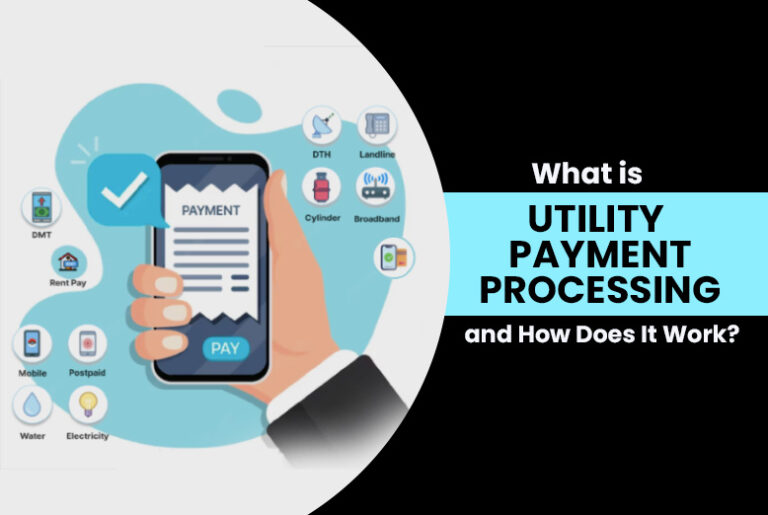Utility payment processing serves as the linchpin of modern societies, ensuring the seamless delivery of indispensable services like electricity, water, and gas to homes and businesses. However, comprehending the intricacies of utility payment processing and its operational dynamics is essential for both consumers and utility providers alike. In this article, we embark on a journey to unravel the workings of utility payment processing, exploring its fundamental components, workflow, challenges, benefits, and future prospects.
Understanding Utility Payments
Utility payments encompass the charges associated with vital services necessary for daily life, including electricity, water, gas, and telecommunications. These services are indispensable, making timely payments crucial for maintaining uninterrupted access. Utility bills typically delineate consumption metrics, tariff rates, and applicable charges, providing consumers with insights into their usage patterns and associated costs.
Components of Utility Payment Processing
Billing Cycle and Generation of Utility Bills
The billing cycle for utility services varies among providers and may range from monthly to quarterly cycles. During this period, consumption data collected from meters or usage estimates are compiled to generate utility bills. These bills detail the amount owed by consumers based on their usage and the applicable tariff rates.
Payment Methods Accepted by Utility Companies
To cater to the diverse preferences of consumers, utility companies typically accept various payment methods. These methods may include online payments through portals or mobile applications, bank transfers, checks, credit cards, and automatic deductions from bank accounts. By offering multiple payment options, utility companies aim to enhance convenience and accessibility for consumers.
Integration of Technology in Payment Processing
Modern utility payment processing leverages technology to streamline operations and improve customer experiences. Online portals and mobile applications allow consumers to access their utility accounts, view bills, make payments, and set up automated billing preferences conveniently. Additionally, integration with third-party payment processors enables secure and efficient transaction processing.
Workflow of Utility Payment Processing
Customer Initiation of Payment
Customers initiate payments through various channels, including online portals, mobile apps, phone calls, or in-person visits to utility offices. To ensure security, these transactions are often authenticated using password verification, biometric authentication, or other security measures.
Transmission of Payment Data
Once initiated, payment data is securely transmitted to the utility company’s servers using encryption and other security protocols. This ensures the confidentiality and integrity of the payment information during transmission. Verification and authentication processes are employed to validate the accuracy of the payment data and prevent unauthorized access.
Payment Processing by Utility Company
Upon receipt of payment data, the utility company records and reconciles payments with the corresponding customer accounts. This involves updating the customer’s payment history, adjusting the account balance, and generating payment receipts or acknowledgments. Any discrepancies or exceptions encountered during the payment processing stage are promptly addressed to maintain accurate financial records.
Confirmation and Communication
Following the processing of payments, customers receive confirmation of payment receipt through various channels, such as email, text message, or within their account portals. This communication serves to provide customers with reassurance regarding the successful completion of their payments and fosters transparency in the payment process.
Challenges and Solutions in Utility Payment Processing
Security Concerns and Fraud Prevention
Security remains a paramount concern in utility payment processing, given the sensitive nature of financial transactions. To mitigate the risk of fraud and unauthorized access, utility companies employ advanced security measures such as tokenization, encryption, and multi-factor authentication. These measures help safeguard customer data and prevent fraudulent activities.
Handling Diverse Payment Methods
With the proliferation of payment options, utility companies must effectively manage diverse payment methods, including cash, checks, credit cards, and digital wallets. Integrated payment processing systems facilitate seamless handling of these payment methods, streamlining the payment process and enhancing convenience for consumers.
Customer Service and Support
Prompt and efficient customer service is essential for addressing payment-related inquiries and issues. Utility companies invest in robust customer support systems, offering multiple channels for assistance, including phone support, online chat, and self-service portals. By providing responsive and personalized customer support, utility companies can enhance the overall customer experience and satisfaction.
Benefits of Efficient Utility Payment Processing
Efficient utility payment processing offers several benefits for both utility companies and consumers alike. These include improved cash flow management, enhanced convenience and accessibility, reduced administrative overhead, and enhanced data accuracy and reporting capabilities. By optimizing the payment process, utility companies can streamline operations, improve customer satisfaction, and achieve greater efficiency in managing their financial transactions.
Future Trends in Utility Payment Processing
Advancements in technology are poised to revolutionize utility payment processing, offering new opportunities for innovation and improvement. Artificial intelligence and machine learning technologies can enhance fraud detection and prevention, improve data analytics and insights, and personalize customer experiences. Additionally, the continued integration of digital payment solutions and mobile technologies will further enhance the convenience and accessibility of utility payment processing for consumers.
Conclusion
In conclusion, utility payment processing plays a critical role in ensuring the reliable delivery of essential services to consumers worldwide. By understanding its fundamental components, workflow, challenges, and future trends, stakeholders can navigate this vital aspect of modern life more effectively. Through continued innovation and investment in technology, utility companies can further enhance the efficiency, security, and convenience of utility payment processing, ultimately benefiting both providers and consumers alike.
Also Read: Get the Most Bang for Your Buck: Low-Cost Payment Solutions



